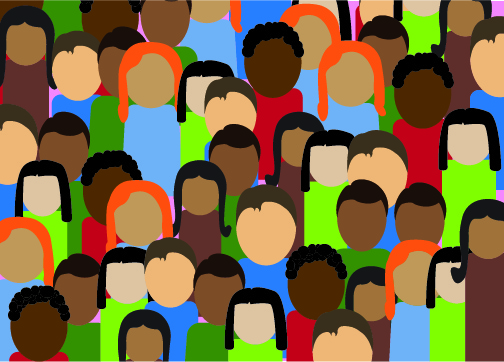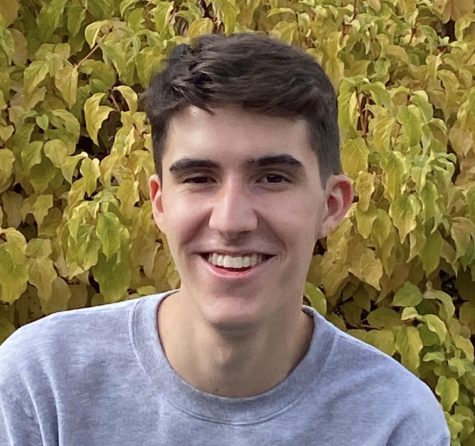The Party and the Pandemic: A Tale of Two Realities
December 8, 2020
It was the best of times, it was the worst of times. It just depends on who you ask. Maybe that has always been the case, but in the midst of a particularly fatal stage of the COVID-19 pandemic, that idea of such starkly contrasting realities between Americans is more apparent than ever. Just blocks apart, people gather en masse at bars and backyard parties that exceed recommended guidelines, while hospital workers face another phase of rising cases and families experience painful losses. Those same hands clapping for healthcare heroes out of windows at sundown now dismiss the virus with a quick wave.
Epidemiologists and other experts do not leave much room for debate about what is and is not advisable during this time. Wearing a mask is incredibly easy and effective in reducing the spread, something that has been routinely proven by the Center for Disease Control as an indisputable fact despite attempts at politicization. We also know that large gatherings, especially in indoor spaces, are primarily responsible for increasing the infection rate, and that it is best to stay in smaller groups or just not congregate at all. Two simple guidelines to follow, and yet, we have largely been unable to adhere to them when most necessary. Experts will attribute some of this to a lack of federal unity; different states had vastly distinct restrictions as baseless doubt about the virus was repeatedly spread by the president. Still, there is an amount of personal responsibility that each of us needs to take in terms of what we can do to reduce the spread and protect lives.
Here at Issaquah High School, students have widely differing opinions on what rules should be followed and what exceptions should be made. Many lament Washington’s strict mandates, but follow them by limiting contact with friends and not attending parties. Others have been more lenient, throwing their own Homecoming bashes because they do not want to miss out on the typically most memorable high school moments. Such actions have garnered criticism from peers, however. Senior Dani Madan worries about the potential of these parties to spread the virus, saying, “They could be asymptomatic and pass on the virus to others, especially as cases are rising in Washington right now.” She is hesitant about attending any mass gatherings herself. Sophomore Priya Bedi agrees, adding, “I would not see anyone outside of my family right now.” Still, some think people take restrictions too far. Freshman Aaron Rhim says, “Restrictions are important and should be followed, but we should not be keeping families apart.”
So why is there such a divide, even within our own small high school community, about how best to socialize during the pandemic? Youth plays a role. Some psychologists talk about adolescent egocentrism, a belief among young people that their age prevents them from suffering any real consequences; rather, they see themselves as the hero of their own story, in which they must overcome controlling obstacles like government restrictions. Psychology teacher Rachel Heilman is not entirely convinced by this psychoanalytic idea, saying, “Perceived invulnerability occurs in all age groups. Right now, it may actually be less prevalent among teenagers.” Instead, a biological approach may help us better understand when we choose to risk the dangers of coronavirus. Our amygdala, the part of our brain associated with reward and feelings of pleasure, develops more quickly than our frontal lobe, a possible factor in why younger folks are sometimes more willing to flout mandates. “We feel good seeing our friends but not wearing a mask, and sometimes our brains favor reward over risk,” says Heilman. Across all age groups, though, are biological predispositions that may be disadvantageous in handling crises like these. Evolutionary psychologists would argue that our brains have evolved to pay attention to threats that feel more immediate and physical, leaving us less well-equipped for “invisible” threats like the pandemic and climate change.
There are plenty of explanations for behavior that may seem illogical during the pandemic. Perhaps it is not that we perceive very different realities after all, but rather, we just choose distinct, often opposite ways to handle our reality. That does not necessarily mean it is impossible to get people to change their behavior, however. Heilman argues that we can use our innate tribalism as a species towards our advantage. “When wishing to communicate the dangers of COVID-19, make it personal,” she says. If we hear about the virus only from professionals (as correct as they are) or people who falsely equivocate it with the flu, we will not take it seriously. Most people change their behavior when they lose a family member or struggle with the virus themselves. It is not practical or safe just to wait until everyone experiences this, so instead, we must focus on storytelling. People are much more likely to follow these guidelines if they hear tales of loss and grief, things that feel more real than statistics on the news, especially if they come from those in their own social circles.
As we enter this new stage of the coronavirus, with both cases and deaths increasing and holiday gatherings imminent, I urge you to think about the people that matter to you. Those looming statistics start to go down when individuals make the choice to hold off on Christmas reunions and keep older relatives safe. It may feel like the worst of times, but when we all start to make the safe choices and protect those we love, our reality will not seem so grim after all.



